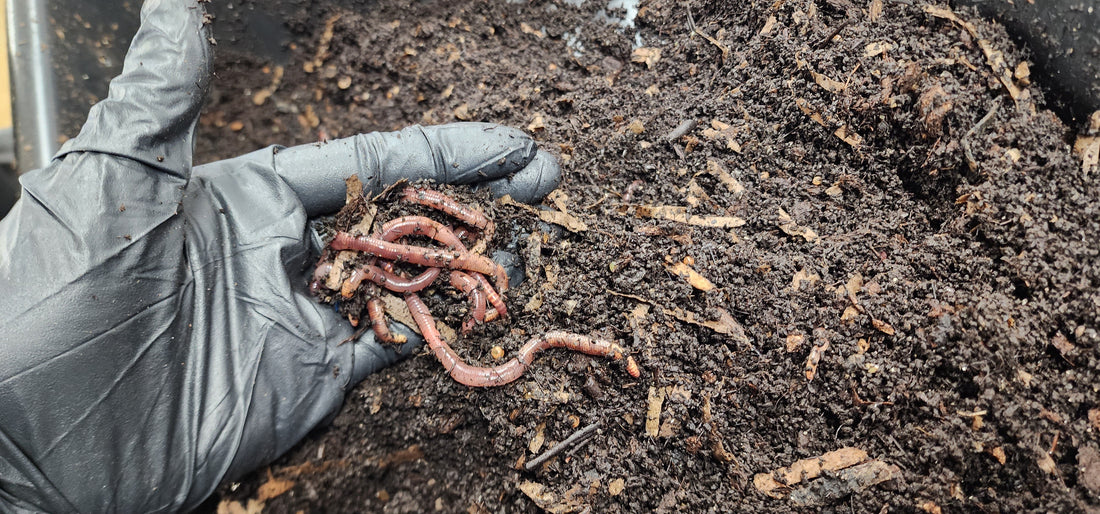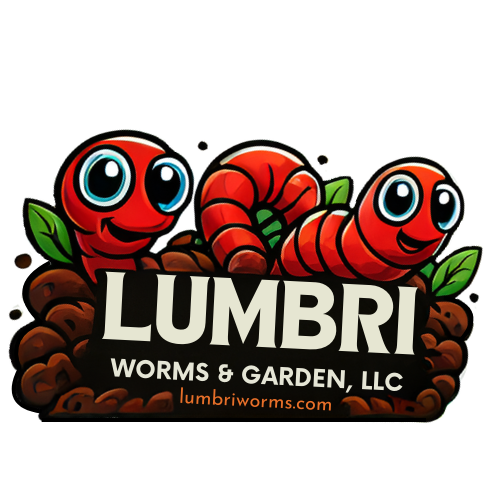
European Nightcrawlers - Bait and Composting - Lumbri Worms & Garden, LLC
Share
European Nightcrawlers are a popular species of composting and bait worm. Here's a detailed overview:
Basic Facts:
Scientific Name: Eisenia hortensis (also known as Dendrobaena veneta)
Common Names: European Nightcrawler, Euro, ENC
Size: 3 to 6 inches long, thicker than red wigglers
Color: Greyish-pink with a pronounced banding (segments) and a milky underside
Temperature Tolerance: 45°F to 85°F (best between 60°F–75°F)
pH Tolerance: 6.0 to 8.0
Lifespan: Up to 1–2 years in captivity with proper care
Uses:
Vermicomposting: Breaks down food waste and bedding materials, producing rich worm castings.
Fishing Bait: Preferred by anglers due to their size, durability, and movement in water.
Soil Aeration: Their burrowing action helps aerate and condition the soil, especially in garden beds.
Breeding:
Reproduction Rate: Slower than red wigglers. Matures in 10–12 weeks.
Cocoon Production: 1–2 cocoons per week per worm. Each cocoon hatches 1–2 baby worms.
Hatching Time: 3–4 weeks under ideal conditions
Feeding Habits:
Diet: Vegetable scraps, coffee grounds, crushed eggshells, aged manure, cardboard, and leaves.
Avoid: Citrus, meat, dairy, greasy/oily foods, and anything heavily salted or spiced.
Habitat Preferences:
Moisture Level: Like damp conditions (similar to a wrung-out sponge)
Bedding: Shredded cardboard, coconut coir, aged leaves, and newspaper
Depth: Unlike red wigglers, they burrow deeper and are more suited for larger bins or soil environments
Advantages:
Can thrive in both compost bins and garden beds
Survive cooler temperatures better than red wigglers
Excellent for bait due to size and wiggle
Produce high-quality castings
Basic Facts:
Scientific Name: Eisenia hortensis (also known as Dendrobaena veneta)
Common Names: European Nightcrawler, Euro, ENC
Size: 3 to 6 inches long, thicker than red wigglers
Color: Greyish-pink with a pronounced banding (segments) and a milky underside
Temperature Tolerance: 45°F to 85°F (best between 60°F–75°F)
pH Tolerance: 6.0 to 8.0
Lifespan: Up to 1–2 years in captivity with proper care
Uses:
Vermicomposting: Breaks down food waste and bedding materials, producing rich worm castings.
Fishing Bait: Preferred by anglers due to their size, durability, and movement in water.
Soil Aeration: Their burrowing action helps aerate and condition the soil, especially in garden beds.
Breeding:
Reproduction Rate: Slower than red wigglers. Matures in 10–12 weeks.
Cocoon Production: –2 cocoons per week per worm. Each cocoon hatches 1–2 baby worms.
Hatching Time: 3–4 weeks under ideal conditions
Feeding Habits:
Diet: Vegetable scraps, coffee grounds, crushed eggshells, aged manure, cardboard, and leaves.
Avoid: Citrus, meat, dairy, greasy/oily foods, and anything heavily salted or spiced.
Habitat Preferences:
Moisture Level: Like damp conditions (similar to a wrung-out sponge)
Bedding: Shredded cardboard, coconut coir, aged leaves, and newspaper
Depth: Unlike red wigglers, they burrow deeper and are more suited for larger bins or soil environments
Advantages:
Can thrive in both compost bins and garden beds
Survive cooler temperatures better than red wigglers
Excellent for bait due to size and wiggle
Produce high-quality castings
European Nightcrawlers are native to Europe, particularly found in Western and Central Europe. They naturally inhabit moist, rich soils in forest floors, grasslands, and gardens, where they help break down organic matter and aerate the soil.
They were introduced to other parts of the world—including North America—for use as:
Fishing bait
Composting and waste management
Soil improvement in agriculture and gardening
Today, they’re widely cultivated around the world due to their resilience and versatility in both composting and bait industries.
